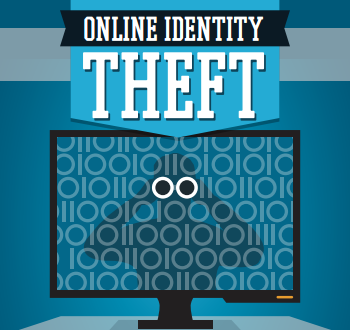Cyberbullying is defined as a young person tormenting, threatening, harassing, or embarrassing another young person using the Internet or other technologies, like cell phones. The psychological and emotional outcomes of cyberbullying are similar to those of real-life bullying. The difference is, real-life bullying often ends when school ends. For cyberbullying, there is no escape. And, it’s getting worse. Read on to get the facts.
Is My Child Watching Pornography Online?
When we think of people who are consumers of online porn, we automatically picture grown adults. However, with access to pornographic sites becoming increasingly widespread, a large number of tweens and teens are believed to have viewed some kind of online porn.
How Many Children Are Watching Porn?
Today, it's reported that at least 90 percent of kids between the ages of 8 and 16 have watched pornography online at least once. Not only have most tweens and teens seen porn, but boys ages 12 to 17 are actually the largest consumers of online pornography. With this statistic, pornography has even been compared to being the drug of choice for youth.
Read More »The Educational Impact of Bullying and Cyberbullying
Parents, educators, and lawmakers everywhere are worried about the impact of bullying and cyberbullying on our kids. The impact on every aspect of a child's life can be far reaching. With the digital age, many kids don't just have to worry about being bullied in the schoolyard. Instead, with the technology available today, bullies can reach our kids at school, after school, and even in their own bedrooms. With smart phones, computers, tablets, and cell phones, bullies are able to reach into a child's life and affect every aspect of it. Bullying and cyberbullying are no longer a simple matter of standing up to the bully and having a face-off. It's no longer a simple matter.
Does Bullying Impact Your Child's Developing Brain?
To many, bullying is still considered a “soft” form of abuse because there are no visible injuries. After all, only our feelings are hurt.
Read More »Recent Study Finds Sexting is the New "Norm" Among Teens
Sexting is the transmission of sexually explicit images through smartphones or other Internet connected or cellular devices like tablets and laptops. Until recently, it was considered a behavior that was limited to "at-risk" teens and a sign of potentially problematic behavior. New research, however, suggests that it may actually be a part of normal sexual development in teens.
Like virtually any controversial subject, however, there are two sides to this argument. Here is the first one:
In the journal Pediatrics, research found that thus far there is a total failure for anyone to prove a link between sexting and any sort of risky sexual behavior. There is also no link yet between sexting and diminished mental health. This was all part of a study that polled over one thousand high school students, and was conducted by researchers at the University of Texas.
Now that you have the "sexting is normal" side of the argument. Here is the counter-debate:
Read More »Cyberbullying: What is it and What Can You Do About it?
Cyberbullying is more than just the latest negative trend to sweep through our communities. It has not only caught on like wildfire, but it seems to be here to stay. Current statistics state that approximately 43% of kids report being bullied online at some point in their adolescence, 1 in 4 report it occurring more than once. Studies also say that 68% of teens agree that it is has become a serious problem.
So, what is cyberbullying? Cyberbullying has been defined as 'bullying that takes place using electronic technology.' But what does this actually entail? Cyberbullying can come in many different forms and use many different methods. Cyberbullying occurs through the use of a cell phone, computer, or tablet. Methods can vary from a cyberbully using social media sites (such as Facebook or Twitter), text messages (whether group or individual), chat programs, or websites.
The internet never sleeps, which means cyberbullying can occur 24 hours a day, 7 days a week. It can reach a child during school breaks, at night, or even when they are alone. As with all things on the internet, it can spread quickly and can be extremely complicated to track down the original offender. Deleting the offensive materials can also prove to be especially difficult once they have been posted.
As a parent, cyberbullying can be a daunting issue, especially if you're not tech-savvy. How do you, as a parent, go about handling such a problem? Here are some tips to help you wade through the topic at hand.
Make your child feel safe and secure. Sure, this sounds easy enough but it is the first step to getting the situation under control. Your child needs to know that you fully support them and are dedicated to the same end result - getting the bullying to stop.
Read More »Sexting Facts and Statistics: Why Parents Should Be Concerned
From all of the news we hear about the span and scope of digital dangers available to youth, it's clear that parents have every right to be worried about the types of activities teens are engaging in online and through phones. It's natural for any parent to be concerned about what their child could be getting into. Although teens may be disgruntled by it, parents have a responsibility to be aware of what is going on and prevent mistakes from being made in kids' digital lives.
The Rise Of Sexting
If you haven't heard of sexting already, you probably will in the near future. Sexting is sending or receiving a sexually graphic or descriptive text message. Studies show that teen sexting is on the rise and many parents are wholly unaware of it.
Quick facts about sexting:
-
11% of teens admit they’ve sent pictures to strangers (Cox Communications)
-
80% of teens who have sexted are under the age of 18 (Cox Communications)
-
Over half (57%) of teens from a 2012 survey reported that they had been asked to send a sext (JAMA)
-
12% of teen girls feel pressured to sext (The National Campaign)
-
38% of teen girls and 39% of teen boys say they have had sexually suggestive text messages or emails—originally meant for someone else—shared with them (The National Campaign)
Plus, according to research, those teens who are sexting or propositioned to send a sext are more likely than their peers to have sexual intercourse.
Read More »The Prevalence of Cyberbullying: It Happens More Than You Think
We see it in the news, we read about it in articles, we occassionaly hear about it happening in our communities. Cyberbullying may seem like a problem that happens at a distance from our own lives. However distanced you may feel from the issue, it is important for parents to know that cyberbullying is quite prevalent and happens in the shadows more often than we all realize.
Is This Problem Far-Reaching?
In a word, yes. All that you have to do is take a look at some of the statistics about Internet usage and accessibility as it relates to teens. In fact, DoSomething.org pulled together a list of statistics on the matter:
-
About 58% of kids admit someone has said mean or hurtful things to them online. More than 4 out
Survey Discovers High Rates of Teen Cyberbullying & Oversharing Online
Even though state laws and parents are making efforts to combat cyberbullying, the number of teens who have been cyberbullied appears to remain high. Additionally, teens don't often seek out parents to help them when they encounter digital dangers. The National Center for Missing and Exploited Children and Cox Communications have released a survey about teens, technology, and cyberbullying. The survey finds are startling to say the least! Here is an excerpt of major findings of the survey outlined in a NCMEC article:
Key trends among the teens surveyed include:
-
Three in 10 teens claim to have been bullied online (31 percent)
-
One in 10 admits to have bullied someone online
-
Of teens who admit to being bullied online, only 41 percent have told an adult
Digital Parenting: Sexting Incidents Up Among Teens and Tweens
It seems juvenile that sexting incidents are making news headlines more and more often these days. Just recently, a teen Instagram "sexting ring" with an account containing more than 1,000 explicit photos of minors was discovered in Virginia; the next day, school officials at a Chicago-area middle school found sixth graders were trading explicit photos. Also this week comes news of an eighth-grade sexting ring in Barrington, Illinois.
According to a 2012 study completed by the Archives of Pediatric and Adolescent Medicine, 28% of teens have sent a "sext" message. Experts predict that number will only go up as more and more teens own smartphones, which make photo taking, sharing, and accessing the internet easier and faster than ever.
Read More »Cyberbullying More Strongly Related to Suicidal Thoughts
Children who are bullied are twice as likely to have suicidal thoughts than children who are not bullied, and cyberbullying is more closely linked to suicidal thoughts than in-person harassment according to a new study published in JAMA pediatrics.
Conducted by researchers in the Netherlands, the study analyzed data from 34 other studies involving almost 300,000 participants. Researchers found that students who were bullied were almost twice as likely to consider killing themselves and two and a half times more likely to actually attempt suicide. The higher risk was found among various age groups and affected both genders.
Read More »What is Facebook?
Facebook Quick Facts:
-
Facebook is the largest social networking site on the planet
-
845 million monthly active users as of December 2011
-
80% of our monthly active users are outside the U.S. and Canada
Cyberbullying Facts and Resources for Parents
Cyberbullying has become a hot-button issue in the past decade. As children and teens of all ages use the Internet in larger numbers, it has become a tool that can be used to harass and intimidate other children even when they are not in the classroom. What should parents know about cyberbullying and where can parents find cyberbullying facts and resources?
Go Online
There are many resources that you can use to gather cyberbullying facts to equip youtself into becoming more educated about the issue. When you educate yourself on the true scope of cyberbullying, it makes it easier to deal with the problem as a parent. If you discover that your child has been bullied online or is bullying others online, you can discuss cyberbullying facts that you have learned to help your child escape the abuse or stop abusing others.
Read More »View our Online Identity Theft Protection Infographic Now!
We just released a new infographic yesterday about the dangers of online identity theft, especially in children.
-
Did you know that 7% of all US households reported some type of identity fraud in 2013?
-
What about that $21 billion in financial loss was attributed to identity theft in 2013?
-
Or even that your children are being targeted for identity theft 35 times more often than you are?
View the infographic for more information and the 6 easy steps you can take to protect your family and loved ones from identity thieves.
Read More »Digital Parenting: Is My Child Ready for Instagram?
Instagram is a social networking site that allows children to share their pictures with friends and family. As a parent you might be wondering if your child is ready for Instagram. There are positive and negative things about letting your child on such a site. One thing is that they can share fun photos with everyone on their friends list. Maturity and age are always a factor in your choice to allow your child on Instagram or not. There is an age restriction where you have to be at least 13 years of age but there are plenty of children younger than this on the site.
Make sure your child keeps their page private. This makes it so that only people on their friends list can view their pictures. You want this because there are people out there who are looking on a site like this to look at young children’s photos. There can even be a problem with their own classmates being on their page. Some children are known to put crude comments about people’s pictures which can affect your child’s self-esteem. Instagram can unfortunately be a breeding ground for cyberbullying.
21 Powerful Tips To Prevent Kids Cyberbullying
This article was originally posted on BlogHer and written by WomenLoveTech.
I get sick in the stomach when I read about teenagers taking their own lives after extensive online bullying. Nearly 80% of kids under 10 use social media. I urge you to take cyberbullying seriously. The Internet is a great place to learn, to be entertained, to share and communicate, but not a place for bullying.
Up to 35 percent of 8 to 11 year olds have their own mobile phone, rising to 94 per cent of 16 to 17 year olds. Children and young people are increasingly gaining access to the internet via their mobiles, yet only a very small percentage have discussed cybersafety with their parents.
I hope these 21 powerful tips to prevent kids cyberbullying will guide you and will help your kids. Please share this list with them.
1. Do not respond to any cyberbullying message, block the person and tell a trusted person.
2. When you are upset, walk away from your computer or your smartphone.
3. Do not write anything against another person, one day you will regret it but it will be too late.
4. Do not share with anyone (except parents) your passwords, your BFF is not an exception.
ICYMI: A Snapchat Security Breach Affects 4.6 Million Users
ICYMI (in case you missed it) there was breaking news on the Snapchat front this week. Here is an article from the Washington Post detailing exactly what happened.
Snapchat users are waking up to troubling news: Thanks to a gap in the service's security, the phone numbers and usernames for as many as 4.6 million accounts have been downloaded by a Web site calling itself SnapchatDB.info.
Digital Parenting: Recent Changes to Facebook's Privacy Policy
This is from one of our favorite Internet safety blogs, The Sue Scheff Blog, and is written by Erin Steiner.
Should you be worried? As a digital parent, the short answer is yes.
For those who haven’t heard, Facebook recently updated its privacy policy for teenage users of the system. Now there is no such thing as “too young to learn about online reputation management.”
Until last week, Facebook automatically made the profiles of users aged 13-17 private and only viewable to friends and friends of friends. Now their profiles are automatically public. That’s right. You’re newly-minted 13-year-old can broadcast his thoughts to the whole world with just the push of a button.
10 Things Every Parent MUST Know About Cyberbullying
This article was originally published in the Huffington Post by Caroline Knorr, Common Sense Media parenting editor.
With the statistics piling up, it has become increasingly clear that the cruelties inflicted by cyberbullying have become a devastating reality for many tweens and teens.
While bullying is nothing new, when it takes place in the digital world, the public humiliation can shatter young lives. Photos, cruel comments, taunts and threats travel in an instant, and can be seen, revisited, reposted, linked to and shared by a huge audience.
We're all responsible for making the digital world a decent place. Below are some of the top concerns we've heard from parents trying to make sense of kids' online behavior.
5 Things Adults Need to Know About Cyberbullying
This article was originally posted on the Huffington Post by Signe Whitson.
According to a recent study by the Cyberbullying Research Center, approximately 20% of kids aged 11-18 say they have been victims of online aggression. In a world of catastrophic headlines and sensational sound bites, these numbers don't actually sound so bad, but take the time talk to any school-aged technology user (read: just about any tween or teen that you meet on the street) and you will no doubt gather that the danger posed by cyberbullying is not in the breadth of its perpetrators and victims, but rather in the depth of damage that online aggression can cause. Just what is it that makes cyberbullying so bad?
















.png)
3.jpg)
